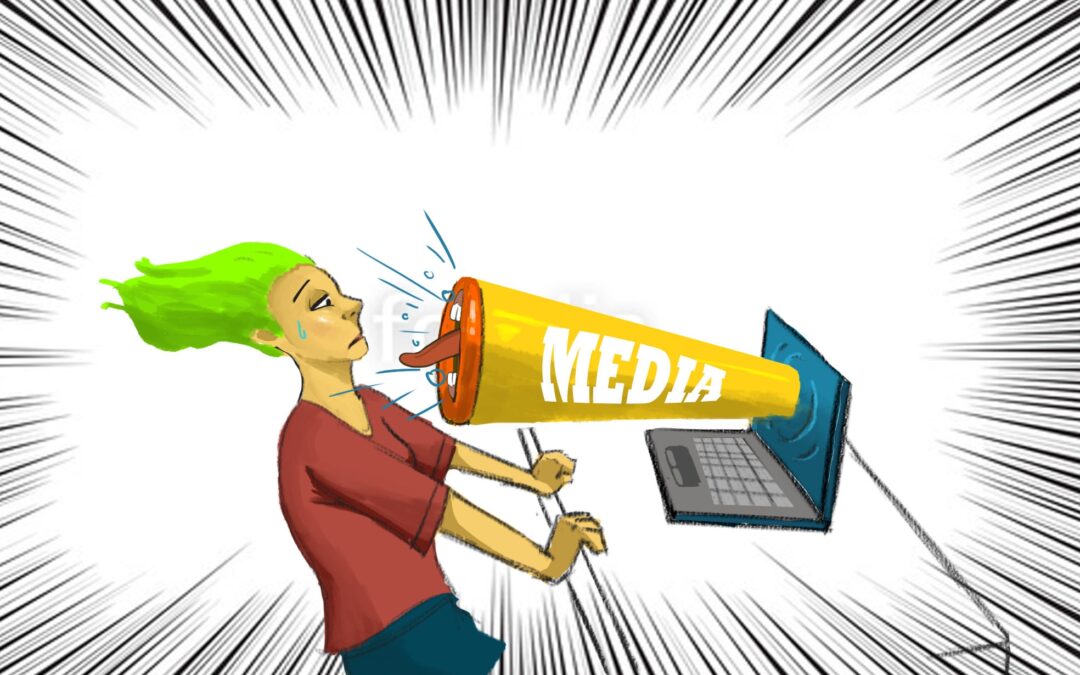Every news channel today is trying to get hold of people’s attention. The busy ticker on the bottom, the flashing “Breaking news” sign, and the blinking advertisement are all there to overstimulate the brain and catch our attention. Gone are the days of the old 9 PM stoic Doordarshan news that a family sat down to gain knowledge of their current affairs. Today is the age of ‘in-your-face journalism’, where the anchor shouts his opinions on you rendering you incapacitated to form your thoughts. Well, any information shouted with conviction must be true right?
The use of sensationalism is not new it has always been used to grab attention. Remember when the famous circus used to be in the town?? They used to lure you with visual and verbal advertisements to amaze you with how a man could tame a lion or how an elephant could stand on a ball! As children, it used to excite us very much but now when we are getting a daily dose of sensationalism on our television sets with 24-hour news? Well, that doesn’t sound very healthy or alluring.
Sensationalism has earned itself the moniker ‘Yellow journalism’ which was coined in the late 19th century. Yellow journalism refers to any information presented in a way through graphics, headings, anonymous sources, jingoism, etc. that arouses the watcher mentally and keeps them hooked. Most of the time these overhyped stories are retracted. The best example of this is the infamous currency ban in India. We all know the story of GPS chips and the satellite tracking technology that many news channels confidently showed on their channels. In retrospect we can see how that information was a hundred percent wrong and sensationalized.
Another example is the coverage of COVID. Channels that could have been instrumental in guiding and informing people became a battleground for people. With a dearth of people qualified for ground coverage, we all saw insensitive interviews and news presentations. With no knowledge of health care, every piece of information was given utmost importance and the scared viewers locked inside their houses adopted everything shown on the TV be it the cow dung narrative or overdosing on Vit-D or Vit-C. The news was shown with so much authority, conviction and not to forget the ever-blinking tickers that claimed to have found an effective cure that people did not even look for the research behind it or credible sources.
News channels are businesses with their eye on the price (audience attention). In this age of insta-stories, shorts, and tik-tok the attention of the viewer is decreasing. Long-form content has lost its charm and people hardly sit through 15 minutes of a calm debate. Unless we have someone shouting over each other on nine windows on the television set, our mind dozes off.
However, what we should think about is what this sensationalism and constant ranting on television are doing to our minds. It is overstimulating us mentally making us immune to just watching the news. We want the thrill, we want the rush it gives us when we see people fighting over their opinions, making personal remarks, and even making statements that later end up on shorts and viewers have a good laugh at it sharing them in their whats app groups. News has become a circus and we are unknowingly performing as our masters dictate.
The animated clips we see on TV recreating the scenes over and over again are prime examples of sensationalism. TV anchors dressing up in a particular way to make the stories more ‘interesting’ take away from the seriousness of the situation and guide the minds of the audience to the ‘exciting’ part of the news. It’s high time for us as an audience to develop a critical mindset and question and fact-check ourselves. We need to detox ourselves from this overdose of adrenaline that we get from the news or else we will be a part of our doom as a society.


Recent Comments